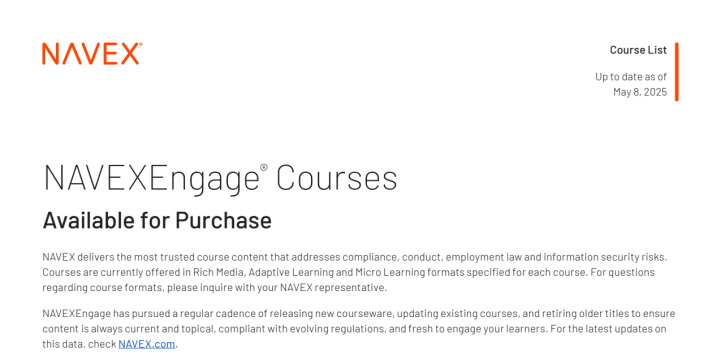This year is proving to be a record-setting year for whistleblowers. On October 22, the U.S. Securities and Exchange Commission announced it had awarded an unprecedented $114 million to a whistleblower who, the SEC says, endured personal and professional hardship to give critical assistance to the agency and bring an end to massive corporate wrongdoing.
The SEC’s whistleblower program has awarded almost as much in the past 10 months as it has in the last 8 years combined.
It’s a bold move that, while historic in its own right, is also just the latest in a series of actions taken by a government agency that appears more determined than ever to both protect whistleblowers and encourage more to come forward. The SEC has awarded roughly $328 million through its whistleblower program so far this calendar year. For context, the program doled out a total of $387 million in the previous eight years of its existence combined. According to SEC Chairman Jay Clayton, “The pace and the amounts of the awards in recent years underscore the Commission’s commitment to increasing the efficiency and effectiveness of the whistleblower program.”
But what prompted this recent flurry of action? And what does it mean for compliance professionals?
Supreme Court Strips Key Whistleblower Protections
One element behind the SECs recent activity is the volume of reports the agency receives, driven at least in part by recent court decisions. In February of 2018, the U.S. Supreme Court ruled in Digital Realty Trust v Somers that employees who internally report concerns about wrongdoing do not enjoy the protections granted to whistleblowers under the Dodd-Frank Act.
The decision, which has been described as “ legally correct but practically ridiculous,” incentivizes employees to bypass their internal reporting systems and go directly to the SEC. Post-Digital Realty, if you uncover wrongdoing within your organization and fear retaliation, the only way to ensure legal protection is to skip the hotline and head straight to the regulators.
New SEC Reforms and the “Backdoor Cap”
Another factor behind the SEC’s latest actions is a host of recent updates to its whistleblower awards program. In June of 2018, the agency proposed a series of reforms that many feared would negatively impact whistleblowing. At issue was a proposal to cap whistleblower awards at $30 million (according to the Dodd-Frank Act, whistleblowers are to receive 10% to 30% of the money collected when sanctions exceed $1 million). The suggested change was met with skepticism by congressional Republicans and Democrats alike.
Concerns over the cap were further complicated by the Trump Administration’s own whistleblower scandal, which placed whistleblowing (already a fraught term) squarely in the public spotlight. Distrust of the administration amongst whistleblower advocacy groups grew, resulting in multiple delays for all the proposed reforms, including broadly supported ones like allowing outsiders to bring tips based on publicly available information and giving the SEC discretion to increase awards for smaller enforcement actions.
On September 23, 2020, the proposals were finally adopted after the $30 million cap was removed. However, critics remain skeptical, noting that the final wording of these changes would effectively allow the SEC to alter awards as they pleased (i.e., a “backdoor cap”). In his public statements, SEC Chairman Jay Clayton has tried to allay those concerns, stressing his agency “remain[s] dedicated to working quickly to get more money into the hands of whistleblowers, including through the improvements that will be implemented as a result the amendments approved by the Commission.”
In fact, the SEC’s recent whistleblower announcements – which include awards for company outsiders who provided independent analysis and for smaller enforcement actions – could be read as arguments in favor of these reforms. Viewed in this light, the SEC’s decision to let a record-setting $114 million payout stand could be seen as a signal to its skeptics, as well as potential whistleblowers, that high-dollar payouts are not a thing of the past.
What Recent Whistleblower Payouts Mean for Compliance Professionals
So, what do the SEC’s actions mean for compliance professionals? First and foremost, they should serve as a reminder that generating awareness of, and confidence in, your organization’s hotline and incident management system is more important than ever. Recent court decisions, regulatory changes, and agency actions give potential whistleblowers more reason than ever to bypass your internal reporting; it is up to you to provide a reason for them to report internally first.
Second, compliance professionals have every reason to believe the number and dollar amount of enforcement actions generated by whistleblower complaints will continue to rise. Last month’s action was a clear indication that the changes recently adopted by the SEC are not a “backdoor cap.” Further, most of the SEC’s reforms are geared toward increasing the number and impact of eligible complaints, not limiting them. This is a message that can and should be shared with senior leadership and the board of directors as (yet another) reason for supporting the compliance function with the resources and autonomy regulators say it requires.
Of course, it is possible that the SEC’s recent flurry of action will slow once attention to the new rule adoptions dies down – and continued vigilance on this issue is warranted. However, when viewed within the context of recent Department of Justice guidance and OFAC frameworks, it’s clear that government agencies are demonstrating a sustained and increasing willingness to hold corporations accountable for compliance failures. No matter what political changes occur in the coming weeks, that is a trend that is almost certain to remain unchanged.


